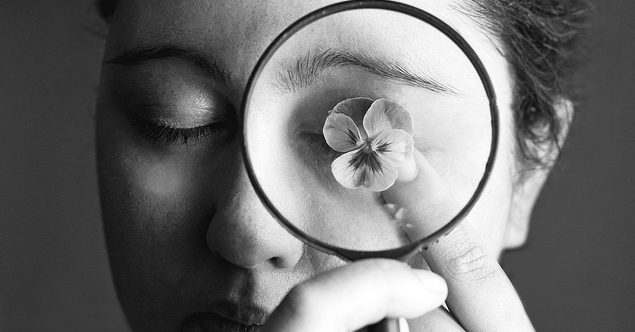
posting by: TL Thompson & C Adams
What does it mean to be human in an increasingly technologized and networked world? Cathy Adams (University of Alberta, Canada) and I have been exploring the digital and how to make its effects and affects visible. And in so doing, make the digital available for critical reflection and ethical consideration. We suggest that posthumanism may offer a productive way to think materiality.
Posthumanism asks us to attend to, and take seriously, what is most near to us: the everyday things of our world. Since the publication of Donna Haraway’s Manifesto for Cyborgs (1985), posthumanist scholarship has been issuing fundamental challenges to how we envision the human subject and its relational surround (see Badminton, 2000; Braidotti, 2013; Barad, 2003; Graham, 2002; Hayles, 1999; Wolfe, 2010). Posthumanism is not about relinquishing our humanity and letting machines take over. Rather, it seeks to correct some of the anthropocentric biases that have dogged humanist perspectives. One such bias is the belief that we are autonomous beings who are unambiguously separated from our tools.
What does it mean to be—or to become—posthuman? For some, the term “posthuman” evokes futuristic images of cyborgs like Captain Picard as “Locutus of Borg” on Star Trek: The Next Generation, an organic-inorganic collective of human and machine. For others, the posthuman is found in Neo of The Matrix, wired directly to the hallucinations of virtual reality, and oblivious to his bleak real world situation (Herbrechter, 2006). Although these are speculative portrayals, they highlight some of the key questions that posthumanism poses.
The dystopian television series Black Mirror, for example, confronts us with possible futures where some of our society’s most cherished binaries, like the separation between public and private life, have been undone by digital technologies. Recent films such as Ex Machina (2015), or even classics like Blade Runner (1982) similarly ask us to question our most closely held understandings of what we mean by human. Who is more human—Rachael the bioengineered android or Deckard the human replicant assassin?
What happens when a machine is made of flesh and blood? Can a machine be more human than a human? How will we tell the difference? Lines blur. Separations that we have taken-for-granted unexpectedly dissolve and form uncanny “inhuman” hybrids. In such moments, our either/or, binary thinking is dealt a blow and slinks away or, dazed, tries to reassert itself in the face of unanswerable questions.
The posthuman does not mean that we are no longer human, that we are becoming inhuman, or even that we are destined to cast off our flesh and blood bodies (Hayles, 1999). Rather:
A posthumanist account calls into question the givenness of the differential categories of “human” and “nonhuman,” examining the practices through which these differential boundaries are stabilized and destabilized. (Barad, 2003, p. 808)
Posthumanism involves reconceiving who we are as human beings in relation to the other-than-human world that we inhabit. Because of continuously fluctuating and unstable boundaries between ourselves and our material surround, posthumanists prefer to talk about “human becoming” rather than “human being”. Central to the posthuman thesis is that we humans are and always have been hybrid or heterogeneous creatures. That is, we have always been both a who and a what (Stiegler, 1998).
Adopting this understanding helps relax some of the stark lines that have theoretically and conceptually separated humans (the who) and nonhumans (the what). Embracing one’s inner—and outer—cyborg happens as we begin to trace how everyday lives and professional practices are always already intertwined with things. A new epistemology like posthumanism demands new ways methods. Thinking in a new way is closely tied to doing (and ultimately being) in a new way.
Turning to the digital as an example, we can see how humans are increasingly outsourcing their daily routines, knowledge practices and decision making to software programs, big databases, algorithms, and global circuitry. New demands, responsibilities and ethical tensions are emerging. As ways of work-learning-living are distributed more extensively and intensively across such networks of coded materialities a new complex of ethical questions comes to the surface: something we’ll discuss in a future posting.
This posting is an excerpt from our upcoming book:
Adams, C., & Thompson, T. L. (2017). Researching a Posthuman World: Interviews with Digital Objects. Basingstoke and London: Palgrave MacMillan.
References
Badminton, N. (Ed.) (2000). Posthumanism. Basingstoke: Palgrave.
Barad, K. (2003). Posthumanist performativity: Toward an understanding of how matter comes to matter. Signs: Journal of Women in Culture and Society, 28(3), 801-831. doi:10.1086/345321
Braidotti, R. (2013). The posthuman. Cambridge: Polity Press.
Graham, E. L. (2002). Representations of the post/human: Monsters, aliens, and others in popular culture. Manchester: Manchester University Press.
Haraway, D. (1985). Manifesto for cyborgs: science, technology, and socialist feminism in the 1980s. Socialist Review, 80, 65-108.
Hayles, H. K. (1999). How we become post human: Virtual bodies in cybernetics, literature, and informatics. Chicago & London: The University of Chicago Press.
Herbrechter, S. (2006). The posthuman subject in The Matrix. In M. Diocaretz & S. Herbrechter (Eds.), The Matrix in Theory (pp. 248-289). Amsterdam: Rodopi B.V.
Stiegler, B. (1998). Technics and Time, 1: The Fault of Epimetheus. Stanford, California: Stanford University Press.
Thompson, T. L., & Adams, C. (2013). Speaking with things: encoded researchers, social data, and other posthuman concoctions. Distinktion: Scandinavian Journal of Social Theory, 14(3), 342-361. doi: 10.1080/1600910X.2013.838182
Wolfe, C. (2010). What is posthumanism? Minneapolis: University of Minnesota Press.

